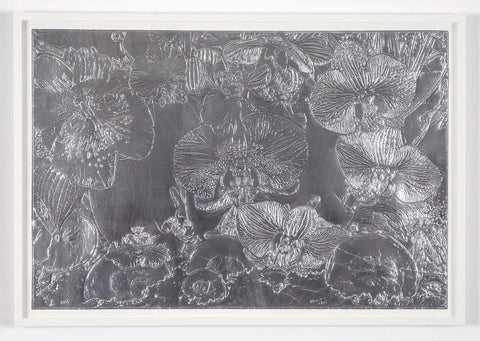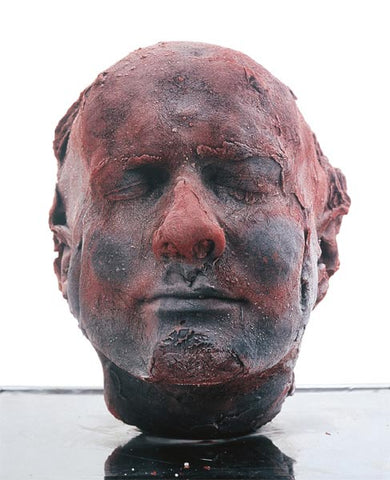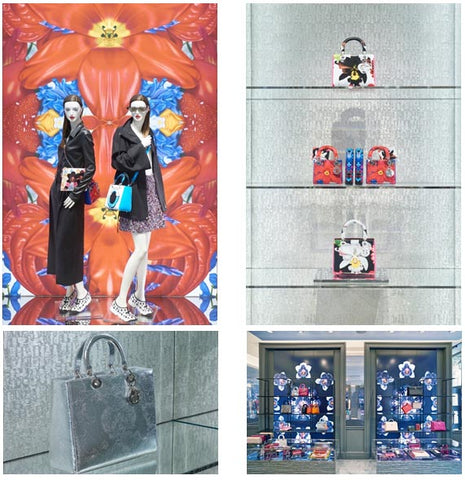artrepublic are very excited to be stocking a new range of Marc Quinn limited editions, due to hit the site in a matter of weeks. In preparation, we take a look at the artist and the blossoming of his exceptional career over the last twenty-five years.

Marc Quinn is a veritable polymath of artistic form: give him bread and he can sculpt it into a hand; ten pints of blood and he’ll whip up a bust of himself; solid gold becomes the world’s best-loved super model; animal flesh into abstract images; DNA creates portraiture - the list goes on. As he has expressed, “art is an engagement with the material world and its continuous transformative energy, as well as the immaterial world of emotions and ideas” and nothing could be a more consummate manifestation of this claim than Quinn’s long-spanning and impressive oeuvre.

Marc Quinn projected himself onto the art scene in the early 1990s, as a member of the now well-established group known as the YBA, or Young British Artists. Having earned a degree in history and history of art from the University of Cambridge, Quinn became an assistant to sculptor Barry Flanagan and quickly went on to make a name for himself, exhibiting his first solo show in 1988 at the Jay Jopling/Otis Gallery. A stream of significant exhibitions followed, from the Sydney Biennale in 1992, to a representation in Young British Artists II at the Saatchi Gallery in 1993, and another solo show at London’s Tate Gallery in 1995, to name a few.

What sets Quinn’s work apart from his contemporaries is his boundless fascination with the material, in any possible guise it might take. Indeed, every artist works with substance, but Quinn turns material into the very subject of his work, probing the scientific, philosophic and political with the fundamental question of what materiality is, at its heart. That which is produced from this nexus is invariably compelling, both aesthetically and intellectually. Quinn’s work never ceases to stun, shock, and inspire, through its visual vagaries and exceptional (and often grotesque) use of substance. His various self portraits - cast in bodily fluids from blood to faeces - are inimitably captivating but they also ask questions that lie at the root of what it means to be human: questions that much modern art has begun to lose touch with.
Yet while this material-meets-existential preoccupation underlies Quinn’s work, it is hard to imagine a contemporary artist more diverse or multifarious. There is certainly continuity across Quinn’s oeuvre, but his vigorous drive to explore form keeps his output constantly fresh and evolving. Most often associated with the art of sculpture, Quinn began his career with a series of bread sculptures, creating classical-style busts, Giacometti-esque figures, and a series of distorted hands (his own, traced onto the dough) which would set the tone for his thought provoking aesthetic. The resultant pieces are not only visually compelling, but rich with thematic profundities: basic need and human survival, consumption, ritual, and chance are all explored and contemplated through these organic sculptures.

Within a few years of the bread sculptures Quinn had begun work on what must surely be his most well known and captivating piece: ‘Self’. This three-dimensional self portrait, cast from ten pints of Quinn’s own, frozen blood, is an intensely powerful expression of the self in modern art, using the literal self as the material with which to produce the symbolic self. In so doing, Quinn has created something unequivocally profound, an extraordinary expression of existentialist reflection that comments on themes of life and death, dependency, ephemerality and the passing of time, while holding its viewer enthralled with its inimitable aesthetic.
In a surprising shift of tone (though not entirely of theme), Quinn had turned his attention to horticulture by the end of the decade, producing the first of the flower sculptures - a series that (like ‘Self’) would become a continuous project over the following years and up to today. This time, Quinn favoured the readymade, but cleverly subverted the manmade Duchampian model, turning, instead, to nature, for what he has described as “the purest and most magical transformation of reality into art.” Returning to the frozen silicone technology used in ‘Self’, Quinn has captured the peak of efflorescence, holding each flower in an eternal image of itself, as it dies within its state of icy preservation. This really is art at its fullest: aesthetically bewitching, materially innovative and intellectually stimulating, with its essential question of the delicate relationship between humanity, technology and nature at its core.
Quinn’s next series of projects saw a return to classical style, using history’s most conventional of sculptural materials: marble. Yet Quinn is an artist who - time and again - powerfully resists any label of conventionality and the choice of substance for his next project was no exception. Ironically named, ’The Complete Marbles’ consists of a series of pure white marble figures, in the style of neoclassical antiquity. Yet Quinn has chosen, for his subjects, not the Gods and Goddesses, heads of state, or Venus’ and Adonis’ of times gone by but, rather, real, everyday people with one thing in common: physical disability. The series - and its title - makes reference to the incomplete Elgin marbles which, over the years, have lost limbs, heads and other peripheral parts. By contrast, Quinn’s marbles do not portray loss or incompleteness but - in a beautiful celebration of difference and disability - the fullness of bodies which diverge from narrow conventions of normality and perfection. The series culminated with Quinn’s exceptional sculpture of artist Alison Lapper, which sat proudly atop Trafalgar Square’s fourth plinth from 2005-2007.
Self, the body, and materially have remained consistent themes in Quinn’s work. If ten pints of his own blood was an impressive choice of material substance, Quinn’s collaboration with the National Portrait Gallery in 2000 took self-as-self-portrait to new heights: this time, Quinn used the DNA of his subjects - amongst whom was Nobel prize winner Sir John Sulston, responsible for sequencing the human genome - to represent them. From there, Quinn returned somewhat to his formal roots, using meat and animal carcasses cast in bronze, to create a series of abstract sculptures in what was surely an homage to existentialist painter Francis Bacon and his memorable oil painting ‘Figure with Meat’.
Quinn’s career exploded in the early 2000s with project after project, each unlike the next but all bound together by their provocative themes and compelling aesthetics: ‘Evolution’ depicted nine stages of the human embryo, each hewn from pink marble and huge in stature, like the towering Moai heads of Easter Island; ‘Big Bang Pop’ blew up pieces of popcorn to an impressive scale and cast them in bronze to represent the “co-existence of the banal and the sublime, and everyday miracles” at the forefront of so much of his work; for ‘History Painting’, Quinn shifted unexpectedly to oil painting and Jacquard tapestry to present snapshots of global catastrophe in the media, from the iconic mushroom cloud, to the riots of 2011.

Recent works have seen a gravitation towards canvas painting and a maturing of style: Quinn has departed somewhat from his Bacon-esque, existentialist roots, towards something a little more hopeful and celebratory, still probing the fundamental questions of life, death and humanity, but in a way which is optimistic, moving, and full of the sublime. Meat, for example, remains a key theme but, in his 2011 series of ‘Flesh Paintings’, Quinn has used ribbons of red and white flesh to create strikingly beautiful, almost abstract oil paintings, full of the vibrancy of life, rather than the overtones of death exposed in ‘The Meat Sculptures’. Similarly, botany and horticulture has remained a strong trope in Quinn’s work, but the flowers on canvas have shed the underlying despondency of the dying, frozen casts, retaining the tremendous beauty of perfect bloom. Enormous bronze casts of shells, aluminium sculptures of Bonsai trees, and stainless steel ocean waves, frozen in dynamic movement, have comprised Quinn’s recent work, all tributes to the beauty of the natural world and its profoundly important relationship to art.
Most recently, Quinn has turned his hand to fashion, creating a series of bags for Dior, all splashed with his exuberant, hyper-real flower displays. Quinn has also included, for the Dior range, his iris images, from the 2009 series ‘Irises’. These are not, as you might expect, images of the flower, but of the “window to the world” - the human eye - in all of its exquisite detail. Quinn is enthralled by “all of the mystery and uncertainty of life” contained within the eye, and describes it as “a very profound expression of the ambiguity which is at the heart of our existence.” Quinn’s irises are breathtakingly beautiful: glassy round shots of intense pigment, coalescing in a way that reminds us of the spectacular power of nature
and humanity, each one a “microscopic map of the individual’s identity.” In
a poignant way, these too are readymades: Quinn has done nothing more than transplant the existing object onto canvas creating, through a process of enlargement, awe-inspiring pieces of near-abstract art.
The new editions to arrive at artrepublic will feature a selection of the iris images, as well as a stunning series of orchid prints and a handful of woodcuts and etchings. Expect high impact, bold aesthetics and intensely thought-provoking pieces from this master of contemporary art. Watch this space…
